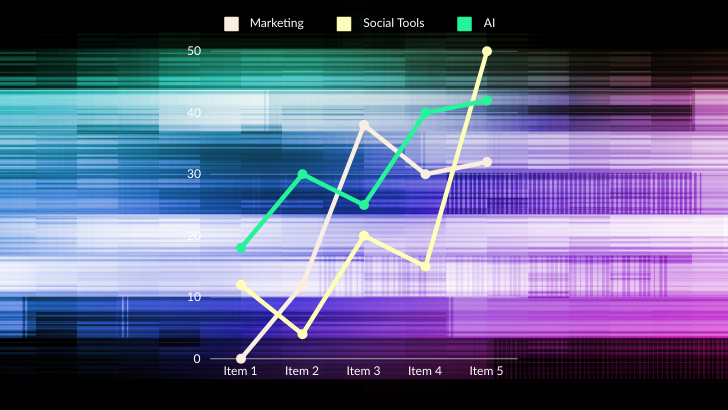Algorand is in a unique position to drive the transformation of financial services thanks to its Pure Proof of Stake (PPoS) algorithm, which was invented by MIT Professor Silvio Micali – a leading computer scientist and cryptography expert.
Read on to learn how Algorand is able to provide a highly scalable blockchain ecosystem that anyone can build on.
Solving the Blockchain Trilemma to Securely Scale
The Pure Proof of Stake (PPoS) algorithm’s unique architecture helped Algorand become the only public blockchain network solving the so-called Blockchain Trilemma by achieving greater scalability without compromising the decentralization and security of the network.
Blockchain is expected to play the leading role in the future of finance. Still, the technology comes in many variations, and today, only a few public blockchain networks are ready to empower financial applications built for the future. Algorand is the first on the list, thanks to its innovative consensus mechanism.
The PPoS algorithm
In a nutshell, the PPoS algorithm allows every token holder to potentially become a block validator by staking ALGO – an approach that is typical for any version of the Proof of Stake family. However, Algorand’s PPoS protocol selects block validators randomly and secretly for every new block added to the chain. Thus, all users have an equal chance to be chosen by the system. In this way, the network stays fully decentralized, allowing the ecosystem to adopt an egalitarian concept.
Here is what Algorand achieves thanks to its PPoS consensus algorithm:
- Solving the Blockchain Trilemma – randomness is the key element that Algorand relies on to ensure true decentralization and greater scalability while preventing a potential 51% attack. The initial PoS algorithms and the more sophisticated versions that followed have been compromising decentralization by letting in a level of predictability when it comes to block validators.
- Scalability – the PPoS algorithm empowers a scalable ecosystem that is built for the future of finance. As of today, Algorand can process over 1,200 transactions per second (tps) soon to become 3,000 tps with instant finality. On top of that, it’s introducing a feature known as block pipelining to boost the tps performance to more than 45,000, which will make it more scalable than Visa.
- Finality – Algorand’s instant finality is essential for financial applications that handle millions of transactions and thousands of assets. The future of finance shouldn’t involve delays and network congestions. On Algorand, the block creation takes less than five seconds, and all transactions reach immediate finality, which prevents counterparty risks.
- Security – thanks to the PPoS algorithm, Algorand is an unforkable blockchain, which is important especially for non-fungible tokens (NFTs). This enables an unmatched level of security.
- Low transaction costs – today’s financial system relies on multiple layers of intermediaries, which charge their fees to make processes work, and where end-users bear all the fees. Algorand supports the development of a user-oriented financial ecosystem that enables low transaction fees.
Earlier this year, SIAE (Società Italiana degli Autori ed Editori) – the largest copyright collecting agency in Italy – leveraged Algorand to mint millions of NFTs representing the rights of its more than 95,000 member authors. The agency paid only several thousand USD in ALGO, whereas the cost to mint a single NFT on other major blockchains ranges between $40 and $100.
Besides NFTs, low transaction costs are important for micropayments; another major trend of finance 3.0.
- Sustainability and Low carbon footprint – since there is no mining process involved in Algorand’s block creation, the network’s carbon emissions are invisible. Algorand went even further and pledged to become carbon negative by reducing its carbon footprint through meaningful partnerships to set the standard for blockchain sustainability.
The PPoS enables Algorand to build a sustainable and scalable blockchain ecosystem that sets the standard for the future of finance. The Algorand network is growing fast thanks to the unique combination of features that wouldn’t be possible without its innovative consensus algorithm. This makes Micali’s invention ideal for a variety of use cases for the future finance (FutureFi), such as:
- DeFi – Algorand is built for decentralized finance (DeFi), the fastest-growing trend of the crypto industry. Today’s DeFi applications represent a major step towards the future of finance, and Algorand’s PPoS consensus mechanism, along with its advanced smart contract technology, enables developers to build all types of DeFi apps.
The first DeFi project on Algorand is Yieldly, whose end goal is to build a cross-chain decentralized exchange focused on users. - Tokenization – tokenization is one of the most important trends within the crypto world. It’s going to transform the way we invest. With the Algorand Standard Assets (ASA) framework, traditional assets can be easily converted to digital tokens by retaining their main features. This makes the assets more liquid, secure, and accessible to a broader range of investors worldwide.
In 2020, the International Blockchain Monetary Reserve (IBMR) developed an exchange platform that supports fractions of company shares that reside on blockchain. IBMR’s Microequity Stock Exchange (MESE) is the world’s first micro equity exchange that allows retail investors to get exposure to the tech equity market by buying fractions of shares on blockchain. - NFT creation – the ASA framework supports NFTs, including fractional NFTs, which opens the door to some great use cases. For example, fractional NFTs can bring more liquidity to real estate, art, or luxury goods.
- Stablecoins – stablecoins will play an essential role in FutureFi, as they act as a bridge between the cryptocurrency space and traditional finance.
Algorand provides the ideal infrastructure for stablecoins. USDC – the fastest-growing stablecoin since 2020 – used Algorand as their first blockchain implementation. Circle, the company behind USDC, cited that Algorand’s scalability potential enables USDC to reach every corner of the world at high speed. - Payments – Algorand is ideal for payments, as it’s one of the fastest public blockchains, being capable of processing more than 1200 transactions per second with instant finality. The technology empowers all forms of financial transactions, including cross-border payments and micropayments, which are especially relevant amid the emergence of disruptive technologies like the Internet of Things (IoT).
Thanks to the PPoS consensus protocol, Algorand has managed to develop a fast-growing, scalable, and sustainable blockchain ecosystem that can host a variety of use cases for FutureFi.
___
This post was originally published on the Algorand blog.




